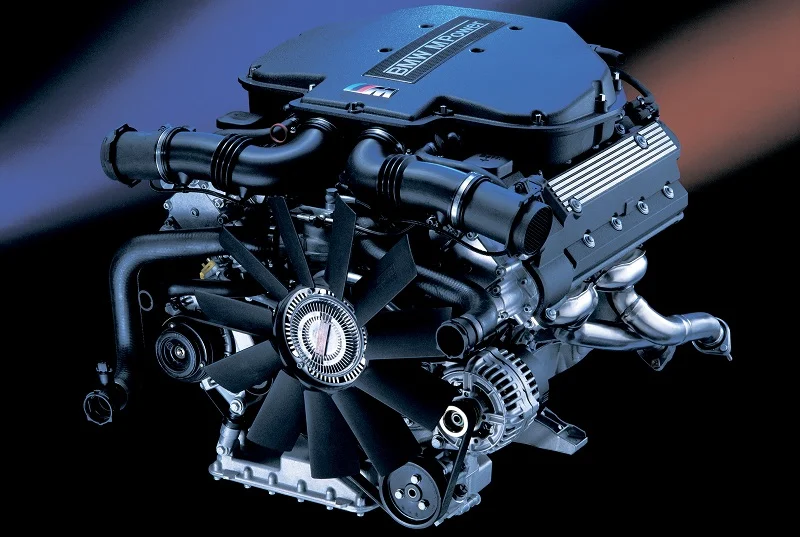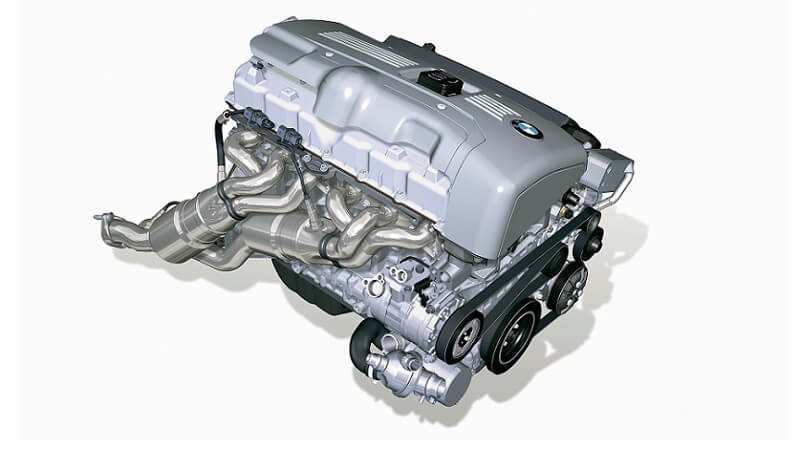The BMW S62 is the legendary, naturally-aspirated V8 engine that most famously powered the E39 M5. Towards the turn of the millennium, BMW had built a reputation for producing excellent straight-six engines and a few high-performance inline-four units, like the S14. However, the V8 layout, although not as prominent during the time, was quite a popular format during the foundational years of the company.
In 1998, BMW brought it back by introducing a V8 on the E39 M5, and it would be the first time that one of the M cars would sport one.

BMW S62 — The Origins
The BMW E39 5-series debuted in 1995, and one of its first models was the E39 540i. This range-topping model, powered by the M62 engine, produced an impressive 282hp and 310lb-ft of torque. As a result, BMW didn’t see the immediate need to create an M iteration of the car.
The decision happened in 1998 when the manufacturer decided to use the naturally-aspirated, 4.4L V8 from the 540i as the base for the E39 M5. This car would be replacing the popular E34 M5, meaning it had rather big shoes to fill.
In addition to the E39 M5, the S62 also made its way onto another BMW — the 2000–2003 BMW Z8. It was carried over in a similar state of tune; however, the Z8’s lighter weight and shorter final drive meant it was quicker than the M5. Apart from the BMWs mentioned above, the S62 also powered the 2006 Ascari KZ1 and 2006 Ascari A10 in a higher state of tune.
Construction
BMW made some significant changes to the 4.4L M62 from the 540i before adding it onto the E39 M5. The bore was increased from 92 mm to 94 mm, while BMW bumped up the stroke from 82.7 mm to 89 mm; this took the displacement from 4,398cc to 4,941 cc. The compression ratio, meanwhile, went up from 10.0:1 to 11.0:1.
The team at BMW engineered the S62 with extremely high levels of precision. The larger cylinders meant that there was only 4 mm between the cylinders, and to ensure effective sealing, the engineers developed new three-layer steel head gaskets. Also, they made tweaks to the cylinder linings to reduce friction.
The S62 was BMW’s first engine to feature a Double VANOS — the manufacturer’s variable valve timing tech on both the intake and exhaust. This worked alongside dual air intakes with mass flow sensors to account for and adjust depending on the air intake.
The engine also featured individual, electronically actuated throttle bodies — one for each cylinder. These also allowed you to switch between “Normal” and “Sport” mode that would alter throttle response.
Other updates compared to the standard M62 were a double-row timing chain in place of the single-row chain, a Siemens MSS 52 engine ECU, and a semi-dry-sump oil system. The updated oil system comprises two additional scavenging pumps, which came into play under hard cornering, ensuring the engine was never deprived of a steady oil flow.
Applications
As we mentioned above, the S62 powered the BMW E39 M5, BMW Z8, Ascari KZ1, and Ascari A10. It is through these cars that we understood just how good this motor was, and how much of an impact it left on designs that came after it.
BMW E39 M5

The BMW S62 debuted on the legendary E39 M5, where it produced some impressive peak output figures — 400 hp at 6,600 rpm and 369 lb-ft of torque at 3,800 rpm. That said, these numbers only tell half the story, and what made the S62 a remarkable engine was the way it delivered power and torque.
Nearly all the torque it had to offer came in from as early as 2,500 rpm and climbed from there quite linearly, almost up until the 7,000rpm redline. BMW M engineer at the time, Wolfgang Kreinhoefner, said “Above all, we wanted to create an abundant torque curve,” and the Bavarians certainly managed to do so with a car that was just as happy blistering down a straight line as it was going sideways.
BMW wanted to keep things in check, though, and electronically limited the top speed of the E39 M5 to 155mph.
BMW Z8
The engine from the E39 M5 was directly fitted onto the BMW Z8 manufactured between 2000 and 2003. However, owing to its lighter weight and shorter final drive, the Z8 managed a 0-60mph sprint in 4.5s — notably quicker than the 5.3s that the M5 took.
Ascari KZ1

Ascari was a British automobile manufacturer that was active until 2010. In 2006, it introduced the KZ1 — a high-performance, hand-crafted, limited-edition model. It used the same mid-mounted S62 engine but in a higher tune. Peak output figures went up to 527 hp at 7,000 rpm and 406 lb-ft at 4,500 rpm while still displacing an identical 4,941cc.
Ascari A10
The Ascari A10 was a road-going iteration of the KZ1-R GT race car from the Spanish GT Championship, and it redefined what the S62 engine was capable of. While retaining the original 4.9-liter capacity, the engine on the A10 was tuned to produce a staggering 625hp.
Tuning Potential
The S62 had enough performance to offer in its natural form, but as you can see from the Ascari models, it was an engine that had loads of tuning potential. Unsurprisingly, it wasn’t long until enthusiasts started to kit the S62 with several updates to churn out as much power and torque as possible.
Some of the most common upgrades included high-performance exhaust manifolds and free-flow exhausts. For those looking for even more power, the most efficient but expensive and complicated update was to add some sort of forced induction.
BMW S62 — Common Problems

For a high-performance engine that’s been around for over two decades, the S62 is relatively reliable. However, there are some problems that multiple owners have reported, and these are the most common ones:
VANOS
The S62 was the first BMW to use a double VANOS system, so it was sometimes unreliable. Owners have reported a rough noise from the engine, a sudden loss of power, and engine sputtering at lower RPM. If you ever run into one of these problems, you should first eliminate the possibility of faulty spark plugs or ignition coils.
In case those are fine, there is a chance that your VANOS system is malfunctioning. Depending on which side has gone haywire, intake or exhaust, you might get an 2A82 diagnostic error code, or one similar to it. If you’re lucky enough, you’ll find that your VANOS solenoids have gone bad, which is an easy part to replace. These are often easily accessible on most BMW engines, including the S62.
BMW S62 Rod Bearing Issues
Rod bearing failures are not a common issue on the S62 engine. However, they can be costly to fix when they do occur. Road bearings, like all mechanical parts, wear out and can fail.
The rod bearings connect the rods to the crankshaft. If they fail and are not fixed immediately, they can result in an engine failure and a hefty repair bill. The most common symptoms of a rod bearing failure are a ticking sound from the engine and metal shavings in the engine oil.
Timing Chain
The S62 uses two timing chains, unlike the M62 that employs just one. However, considering the ages of these engines, it’s likely that most of them have crossed the 150,000-mile mark that they are designed for. Replacing them can be a labor-intensive job, and so it’s worth keeping an eye out for if you’re looking at getting a used E39 M5.
A faulty timing chain should light up the check engine light on the dash and cause a whistling sound from the engine head.
BMW S62 — Closing Thoughts
The S62 engine was the first chapter in BMW’s modern-day V8 line. The E39 M5 set the benchmark for high-performance, luxury sedans that are great daily drivers even today. Yet, no matter how good BMW makes them, it’s on us as owners and drivers to make sure that our engines are well taken care of. Here at Bimmers.com, we carry a whole array of Genuine, OEM and aftermarket parts for your S62, or any other bimmer you might have. Check out our catalog and find out we are the choice of true enthusiasts!





